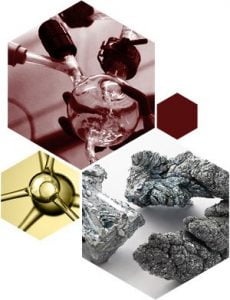
Ammonium Carbonate
Properties
- We can offer items in bulk or custom. For other quantities or purities, please request a quotation.
- All prices are subject to change.
Related Products
Information about Ammonium Carbonate / CAS 506-87-6
Ammonium Carbonate (NH4)2CO3 is a white crystalline salt that readily decomposes upon heating to carbon dioxide and ammonia. It is used in households as a leavening agent (“Baker’s Ammonia”) and as a smelling salt. It is used as a mild inorganic base in various laboratory chemical processes and in commercial applications including the food, pharmaceutical, agricultural and chemical industries.
Ammonium Carbonate, once commonly used as a leavening agent in northern Europe and Scandinavia, has largely been replaced by modern baking powder and baking soda in the food industry. When heated, it releases a strong ammonia odor, making it ideal for baking thin dry cookies and crackers like Speculoos and Lebkuchen, where the odor evaporates during baking. It also regulates acidity in baked goods and was historically known as Salt of Hartshorn, as it was derived from ground deer horns.
In addition to its food applications, Ammonium Carbonate is a versatile compound with many industrial uses. In the pharmaceutical industry, it’s found in smelling salts and as an expectorant. It is used as a source of ammonia and a pH adjuster in chemical processes, and as a cleaning agent for stains and grease. In the tanning industry, it helps soften leather, while in agriculture, it serves as a nitrogen fertilizer and pesticide. The textile industry employs it as a dye fixative, and it is also used for cleaning wool. Additionally, Ammonium Carbonate has applications in photography and as a precursor for synthesizing chemicals like urea
References:
- Alstead, S. (1941). Ammonium Chloride and Ammonium Carbonate in Chronic Bronchitis. The Lancet, 237(6132), 308–310. https://doi.org/10.1016/S0140-6736(00)60745-6
- Covington, A. D., & Wise, W. R. (2019). Deliming. In Tanning Chemistry: The Science of Leather (pp. 181–195). The Royal Society of Chemistry. https://doi.org/10.1039/9781788012041-00181
- Weston, C. W., Papcun, J. R., & Dery, M. (2003). Ammonium Compounds. In Kirk-Othmer Encyclopedia of Chemical Technology (Vol. 2, pp. 711–762). Wiley. https://doi.org/10.1002/0471238961.0113131523051920.A01.PUB2
Safety
- H302 Harmful if swallowed.
- H315 Causes skin irritation.
- H319 Causes serious eye irritation.
- H320 Causes eye irritation.
- P264 Wash skin thoroughly after handling.
- P270 Do not eat, drink or smoke when using this product.
- P280 Wear protective gloves/protective clothing/eye protection/face protection.
- P301+P312 IF SWALLOWED: call a POISON CENTER or doctor/physician IF you feel unwell.
- P302+P352 IF ON SKIN: wash with plenty of soap and water.
- P305+P351+P338 IF IN EYES: Rinse cautiously with water for several minutes. Remove contact lenses, if present and easy to do. Continue rinsing.
- P312 Call a POISON CENTER or doctor/physician if you feel unwell.
- P332+P313 IF SKIN irritation occurs: Get medical advice/attention.
- P337+P313 IF eye irritation persists: Get medical advice/attention.
- P362 Take off contaminated clothing and wash before reuse.


